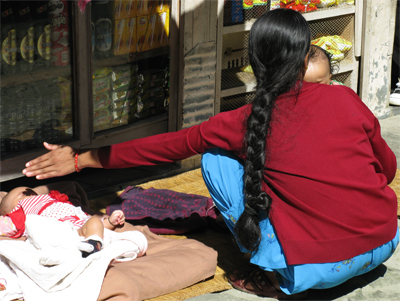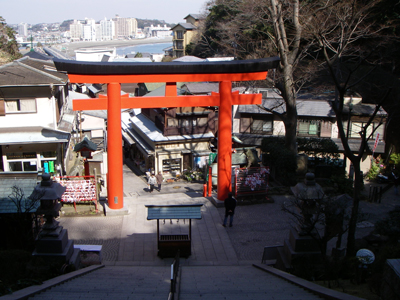The Seeing Red symposium and workshop will be held on January 12th, 14th, 19th, and 21st at Aalto University School of Art and Design (former TAIK), Hämeentie 135 C, Helsinki, Finland. Researchers, doctoral students, and MA students working on thesis: Welcome!

Venue
Program
First day, January 12th, 2010, Aalto University School of Art and Design (open for all)
Second day, January 14th, 2010, Aalto University School of Art and Design (open symposium for all)
Third day, January 19th, 2010, Aalto University School of Art and Design (closed workshop for invited participants)
09.15-10.00 Opening and discussion for the program: Suvi Kitunen and Antti Raike
10.00-10.30 Michihito Mizutani: Principles of Interaction design
10.30-11.00 Tarmo Toikkanen: Agile prototyping
When creating innovative software solutions, they cannot be specified in advance. Traditional linear development models do not work, so iterative and agile methods are needed. This talk will present an R&D method that is used design and create software solutions that truly deliver what their target audience needs.
11.00-11.30 Prototyping with Rasmus Vuori, Jyrki Messo, Markku Reunanen and Tarmo Toikkanen
11.30-12.00 Prototyping continues
12.00-13.00 LUNCH
13.00-13.30 Rasmus Vuori: Narrative inertia
13.30-14.00 Discussion: Emotion colours
14.00-14.30 Prototyping continues
14.30-15.00 BREAK
15.00-15.30 Prototyping continues
15.30-16.00 Discussion & demos
16.00-16.30
16.30-17.00 Conclusion
Final day, January 21st, 2010, Aalto University School of Art and Design (open symposium for all)
Invited speakers
Raija Talvio
Anna Heiskanen
Simo Vanni
M.D. from University of Helsinki 1990, Ph.D. from University of Helsinki and Helsinki university of technology 1998. Postdoc in CerCo laboratory/CNRS in Toulouse, France 2000-2002. Director of Vision systems physiology -group at Brain research unit, Low temperature laboratory, Helsinki University of Technology from 2002 onwards. The group uses functional imaging and psychophysics to study biological visual signal processing in human brain. Docent in neurophysiology 2006, academy research fellow 2008.
Samu Mielonen
Samu Mielonen (MA, New Media) is a researcher and consultant working in the field of media and energy. He’s been teaching various courses on visualization for the past years at the University of Art & Design and enjoys his protanomalous color vision deficiency.
Markus Koskela
Markku Reunanen
Markku Reunanen is the lecturer of interactive visualization at Media Lab, University of Art and Design Helsinki. His teaching consists of themes such as 3D user interfaces, interface prototyping, dynamic visualization and software development. In addition to his educational activities he is a member of the Systems of Representation research group.
Before Mlab Markku studied software science at Tampere University of Technology and worked there in virtual reality related projects. He is a postgrad student at Helsinki University of Technolgy, where he also worked as a researcher for two years on a project dealing with immersive art. Underground demo scene research has been Markku’s pet project since 2004.
Tommi Jantunen
Dr Tommi Jantunen is a Postdoctoral Researcher and the leader of the project 3BatS financed by the Academy of Finland (2010-2012). He received his MA in General Linguistics in 2001 (University of Helsinki) and his doctoral degree in Finnish Sign Language (FinSL) in 2008 (University of Jyväskylä, JyU). He has previously worked both as a lecturer (2005-2009) and as an assistant (2004) in FinSL at the JyU, as a lecturer at the Humanities Polytechnic/Sign Language Interpreter Degree Programme (2003-2004), and as a Sign Language researcher at the Finnish Association of the Deaf (1998-2002). His research areas cover the history and change of FinSL, FinSL lexicon, and FinSL grammar (phonology, morphology, syntax). In the current project he investigates critically certain well-established assumptions concerning signed language and its linguistic research.
Philip Dean
Lauri Ahonen
Lauri Ahonen received his M.Sc. in Technology in the spring of 2009. His current field of study is cognitive fatigue and its relation to human physiology. Lauri is interested in the research of the human senses, their neurology and relation to cognition. He also finds interaction with information systems and usability issues fascinating. A collective term for his interests is neuroergonomics. Lauri’s work focuses, due to technical background, designing research paradigms. He is currently employed as a research engineer at the Finnish Institute of Occupational Health (Työterveyslaitos). He is responsible for the technical engineering in research paradigms. Furthermore, he will participate as a student in a teaching programme for a degree in innovation management, when the programme starts in the spring of 2010. Lauri’s future plans are to pursue a Ph.D. degree abroad, possibly in an industrial project.
Michihito Mizutani
Tarmo Toikkanen
Tarmo Toikkanen is a psychologist, a software architect, a scrum master, an entrepreneur, an author, and a researcher. Tarmo works as a researcher in the Learning Environments research group at the Media Lab of the Aalto university and is working on his doctoral thesis at the University of Helsinki. His research tasks include both agile software R&D project management, as well as social network analysis of collaborative learning scenarios. He also studies how social media tools and services could be utilized in educational settings. His publications range from software artefacts to conference presentations, from peer reviewed academic articles to popular magazine articles and books.
Rasmus Vuori
Kirsikka Vaajakallio
Kirsikka Vaajakallio has MA in industrial design, and she graduated from the University of Art and Design Helsinki 2006 after working there as research assistant during 2005-2006 in user centered design project named Active@work. She started her doctoral studies in 2007 in the Design Connections Doctoral School in the School of Design. In her research she investigates creative team work, particularly how game-like approaches like design games provide a framework for collaboration during development and change processes. The study emphasizes design oriented way of gaining user insights and finding design opportunities, i.e. exploring how visual and tangible design representation can be harnessed for sharing and producing knowledge within a group of people. She visited Danmarks Design Skole, in Copenhagen during the autumn 2007. Currently She works with service design related project called Extreme Design: “Developing Extreme Service Design Methods”. The project is conducted in collaboration with TKK (HIIT and Sober-IT) and four companies.
Sonja Iltanen-Tähkävuori
Sonja Iltanen-Tähkävuori (DA) is a fashion designer and a researcher. She has studied practical and ethical issues related to industrial fashion design and ageing since 1999. Currently she is working with a post-doctoral research project on clothing, dementia and home care.
Akira Sano
Akira Sano is a visiting researcher from Japan. His research area is “Augmented Reality” and “Physical Computing”. He develops new
applications to expand the ways of communication on Internet. He was born in 1973 Osaka, Japan. After studying at graduate school of Human Sciences Osaka University, he worked for commercial film production in Tokyo as a production manager. In 1997, he established a digital contents division and worked as a technical director. While his working, the contents which his team made got many international advertisement prizes. In 2001, he worked for Kyushu Sangyo University as a associate professor.
Markku Hauta-Kasari
Markku Hauta-Kasari was born in 1970 in Sonkajarvi, Finland. He received his MSc in computer science from the University of Kuopio, Finland, in 1994 and his PhD in information processing from the Lappeenranta University of Technology, Finland, in 1999. Since 1999 he has been working in research and teaching positions at the Department of Computer Science, University of Joensuu, Finland. In 2002 he was one year as Acting Professor. From 1996 to 1998 he was a visiting researcher at the Optical Sensing Laboratory, Saitama University, Japan. In 2002 he was 2 months as a visiting researcher at Professor Miyake laboratory in Chiba University, Japan, and in 2007 one month as a visiting Professor at the National Museum of Japanese History, Japan. He is a Docent in spectral imaging and spectral image analysis at the University of Joensuu. Since 2003, he has been the Director of InFotonics Center Joensuu research center at the University of Joensuu. His research interest include spectral color research, pattern recognition and computer vision. He is a member of the Optical Society of Japan, and Pattern Recognition Society of Finland. He is the committee member of the International Committee for Imaging Science, ICIS, representing Finland, since 2007. He is a past chairman of the Pattern Recognition Society of Finland. Since 2008, he is the chairman of the CIE Technical Committee TC8-07 “Multispectral imaging”.
Harald Arnkil
Harald Arnkil is an artist, colorist and art educator. He is a full-time faculty member in the School of Visual Culture at the University of Art and Design Helsinki, holding a permanent tenure as lecturer in color studies since 1990.
He graduated with a degree in painting from the Finnish Academy of Fine Art in 1979 and has held several one-man exhibitions and taken part in numerous group shows in Finland and abroad. Arnkil has lectured and published articles on color and art in Finland and abroad, and has recently published “Värit havaintojen maailmassa”, a book on color for artists, designers and architects. Harald Arnkil is also the founder and president of the Finnish Color Association and is a member of the Stockholm-based SYN-TES -research group on colour, light and space.
Jussi Lohijoki
Moderators
Suvi Kitunen
Suvi Kitunen is a web designer and lecturer. Kitunen started to design web sites at the age of 15. In 2004 she moved to study in the UK. While in the country, she worked as a freelance web and graphic designer. After three years she scored a first class degree in media production and moved back to Finland to do MA degree at Media Lab, the University of Art and Design Helsinki. During her studies she specialised in user-centred design. Kitunen was part of a Finnish team to win a 24HRS participatory design competition in Oslo. Her MA theses focused on designing web interfaces for Deaf users. Currently, Kitunen is working as a digital media teacher at the University of Applied Sciences Kymenlaakso (Kymenlaakson Ammattikorkeakoulu) and giving lectures on web design for users with special needs.
Antti Raike
Webcast
Diana de Sousa
Heikki Tuononen
About the symposium and workshop
Three symposium days are open for all, but registration and a small preliminary work will be required. The workshop on Tuesday, January 19th is closed. We will organise a video stream for all four days and the presentations will be published on SlideShare. Participants and presenters are encouraged to join LeMill for discussions. The name of our LeMill group is “VIPP workshop and symposium 2010: Seeing Red“. Make a LeMill account before joining the group, please.
Speakers’ presentation notes and related discussion forums
http://lemill.net/community/groups/vipp-workshop-and-symposium-2010-seeing-red
Registration
Registration for Jan 12th, 14th, and 21st, 2010: Join the LeMill group for Seeing Red
Lunch



